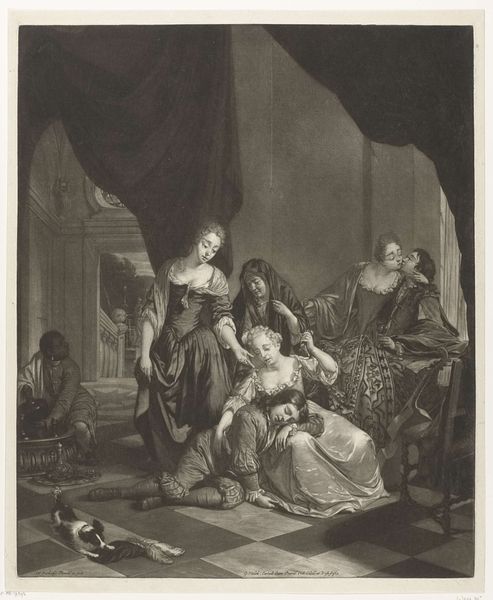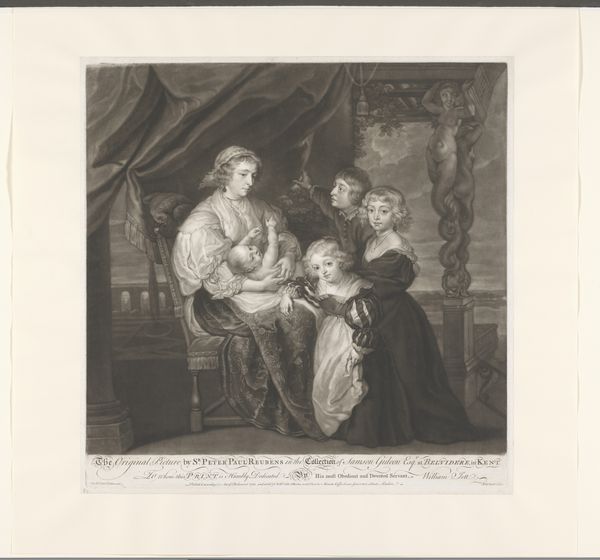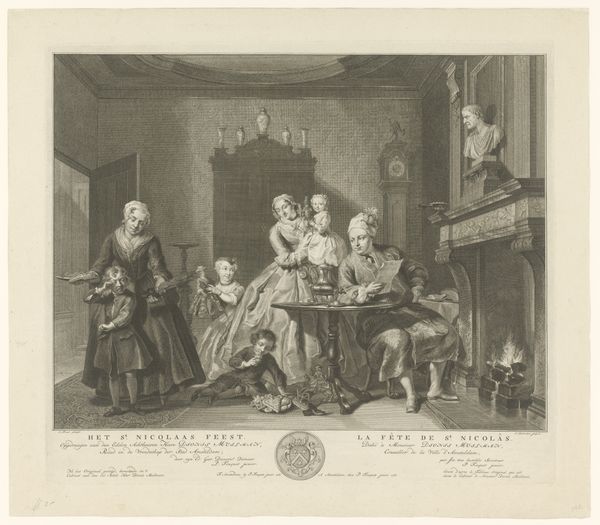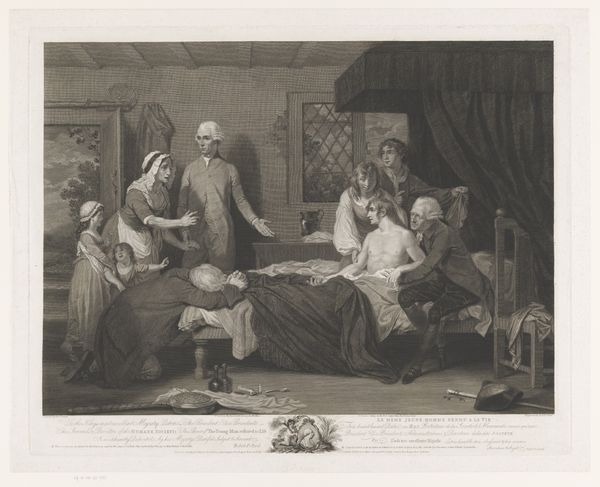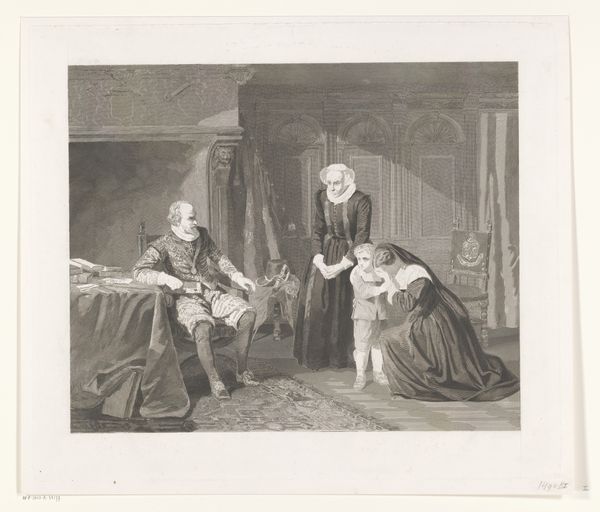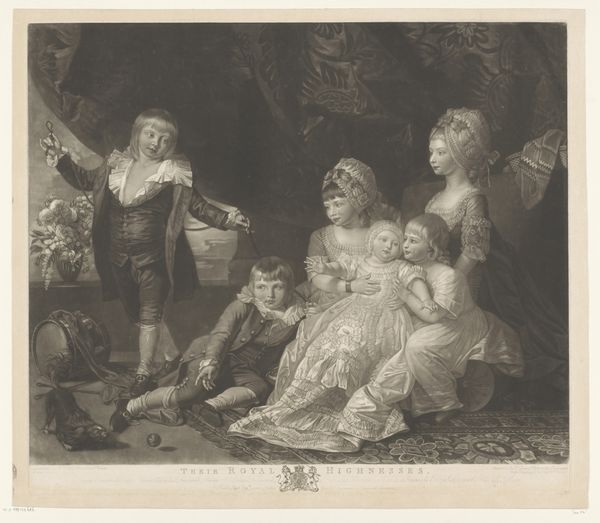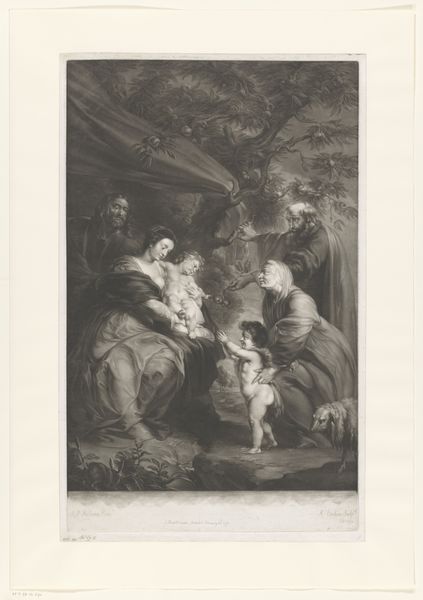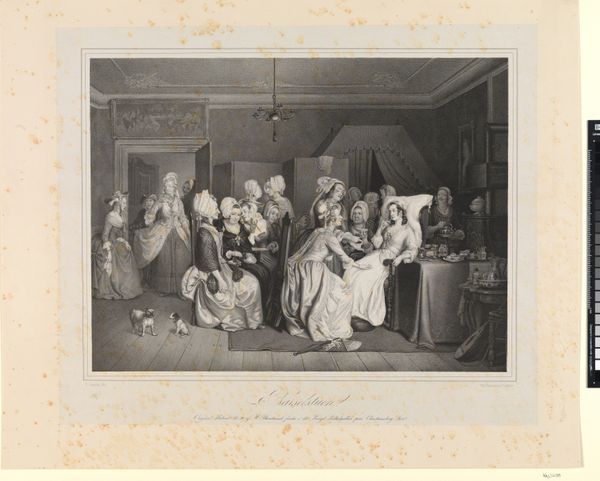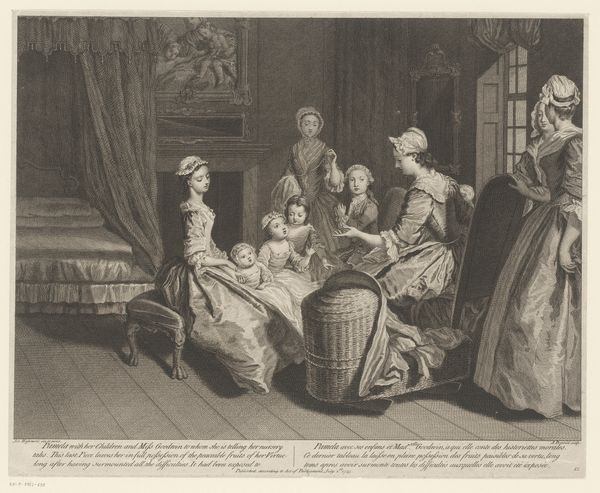
drawing, print
#
drawing
#
narrative-art
# print
#
death
#
romanticism
#
19th century
#
men
#
history-painting
Dimensions: Sheet: 18 7/16 × 20 7/8 in. (46.8 × 53.1 cm) Image: 15 1/2 × 19 1/2 in. (39.4 × 49.5 cm)
Copyright: Public Domain
Editor: This is "The Death of Leonardo da Vinci," a print by Joseph Théodore Richomme, made sometime between 1820 and 1830. It has this very dramatic, almost theatrical mood about it. What symbols or underlying cultural memories do you see being referenced in this work? Curator: Notice how the artist presents François I cradling Leonardo, a tender scene meticulously staged to convey a specific narrative. The gesture of the King supporting Da Vinci creates a powerful visual association – can you see a resemblance to images of the Pietà, where the Virgin Mary cradles the dead Christ? Editor: Oh, that's interesting. I hadn't made that connection! Curator: Richomme leverages the Pietà's established symbolism to elevate Leonardo, imbuing him with a saintly, almost divine aura in his final moments. The surrounding figures, their expressions ranging from grief to quiet contemplation, reinforce the gravity of the scene. Doesn’t it invite a reflection on artistic genius and mortality? Editor: It does. The details, like the cross and the praying figure on the left, almost make it look like a religious experience as much as a death scene. Curator: Precisely. The cultural memory of the Pietà gives "The Death of Leonardo da Vinci" another symbolic layer, allowing Richomme to articulate Da Vinci’s significance beyond mere artistic skill. It speaks to legacy. What do you make of it now? Editor: I see how Richomme used existing visual language to communicate Leonardo's importance in a very potent, readily understandable way. It's not just a historical depiction; it's a statement about art and genius, drawing from very powerful symbols. Curator: Exactly! Cultural memory is often embedded in images, allowing artists to express complex ideas succinctly. It gives the piece a certain immortality.
Comments
No comments
Be the first to comment and join the conversation on the ultimate creative platform.

